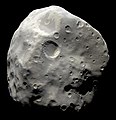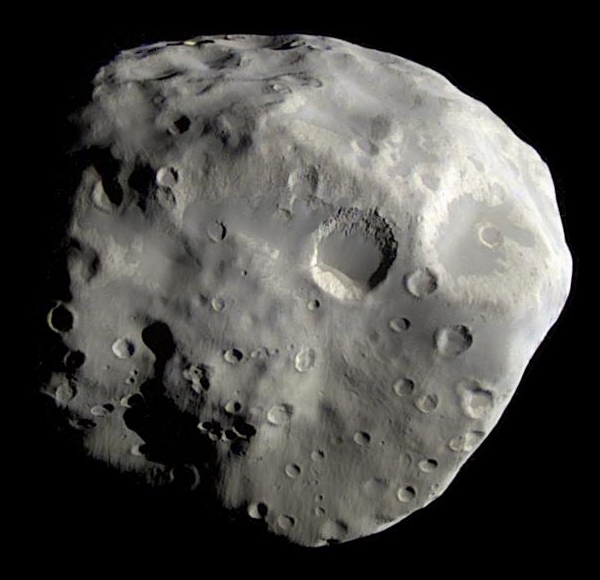Fitxer:PIA09813 Epimetheus S. polar region.jpg
PIA09813_Epimetheus_S._polar_region.jpg (600 × 580 píxels, mida del fitxer: 153 Ko, tipus MIME: image/jpeg)
Historial del fitxer
Cliqueu una data/hora per veure el fitxer tal com era aleshores.
| Data/hora | Miniatura | Dimensions | Usuari/a | Comentari | |
|---|---|---|---|---|---|
| actual | 00:49, 6 gen 2013 |  | 600 × 580 (153 Ko) | Antonsusi | Turn back ok, but the margin makes only a smaller, not optimised visible size of the object on pages. |
| 09:59, 19 des 2012 |  | 680 × 640 (222 Ko) | WolfmanSF | Reverted to version as of 17:18, 11 January 2008 - Solar System objects are normally portrayed with north up, which means solar illumination comes from the side; also, there's no artistic advantage to eliminating the margin | |
| 04:39, 9 gen 2011 |  | 580 × 600 (146 Ko) | Antonsusi | cropped, turned upright | |
| 19:18, 11 gen 2008 |  | 680 × 640 (222 Ko) | WolfmanSF | replace with processed NASA image |
Ús del fitxer
Les 7 pàgines següents utilitzen aquest fitxer:
Ús global del fitxer
Utilització d'aquest fitxer en altres wikis:
- Utilització a af.wikipedia.org
- Utilització a als.wikipedia.org
- Utilització a ar.wikipedia.org
- Utilització a ary.wikipedia.org
- Utilització a arz.wikipedia.org
- Utilització a ast.wikipedia.org
- Utilització a as.wikipedia.org
- Utilització a be.wikipedia.org
- Utilització a bh.wikipedia.org
- Utilització a bs.wikipedia.org
- Utilització a ckb.wikipedia.org
- Utilització a de.wikipedia.org
- Utilització a el.wikipedia.org
- Utilització a en.wikipedia.org
- Cassini–Huygens
- Epimetheus (moon)
- Wikipedia:Selected anniversaries/December 18
- Timeline of discovery of Solar System planets and their moons
- Moons of Saturn
- List of Solar System objects by size
- Naming of moons
- List of natural satellites
- User:Dabomb87/Sandbox
- Talk:Solar System/Archive 7
- Wikipedia:Main Page history/2012 December 18
- December 1966
- Wikipedia:Main Page history/2016 December 18
- Wikipedia:Main Page history/2017 December 18
- Utilització a es.wikipedia.org
Vegeu més usos globals d'aquest fitxer.



